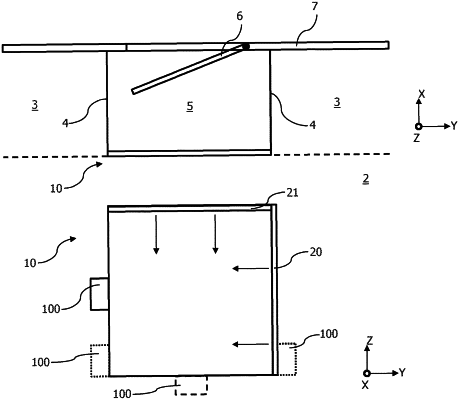| CPC B64D 11/0023 (2013.01) [E05B 17/2007 (2013.01); E05B 41/00 (2013.01); E05B 77/42 (2013.01); E05B 85/24 (2013.01); E05C 19/026 (2013.01); E05C 19/12 (2013.01); E05Y 2900/502 (2013.01)] | 20 Claims |

|
1. An aircraft barrier system for separating, within an aircraft, a secure area from a passenger cabin of the aircraft, wherein the aircraft barrier system comprises:
a barrier installed inside the passenger cabin and configured to move between an open position and a closed position;
a latch mounted to the barrier;
a locking device comprising a latching clamp configured to lock the latch when the barrier is in the closed position; and,
a release mechanism configured to move the latching clamp from a locking state, locking the latch, to an unlocking state, releasing the latch,
wherein, in the unlocked state, the latching clamp and the latch are disengaged from one another, wherein the release mechanism is further configured to delay the moving of the latching clamp from the locking state to the unlocking state,
wherein the release mechanism comprises a spring element acting on the latching clamp to move the latching clamp from the locking state to the unlocking state, and a damper connected to the latching clamp to slow the movement of the latching clamp,
wherein the release mechanism comprises an activator that triggers the delayed moving of the latching clamp from the locking state to the unlocking state, wherein the activator is connected to the locking device at a connection point,
wherein the connection point is located at a connection point end proximate to a first terminal edge of the activator opposite a handlebar end proximate to a second terminal edge of the activator, and
wherein the activator is configured to rotate around the connection point.
|